
Your dog handling guide

Philippa Short
9 January 2024 | 14 minutes read
Being a good caregiver to your dog means having the skills to check them over from head to toe.
Join expert dog behaviourist Philippa Short as she explains how to successfully teach your dog how to be handled.
- Why it’s important to learn how to handle your dog
- Laying groundwork for teaching your dog to be handled
> Step one – Read your dog’s body language
> Step two – Do a consent test with your dog - Why a dog may struggle being handled
- How to teach your dog consent-based handling
> Chirag Patel’s bucket game - How to condition your dog to be handled
> What to do if your dog doesn’t want a body part touched
> How long does it take to desensitise a dog to being handled? - Handling different parts of your dog’s body
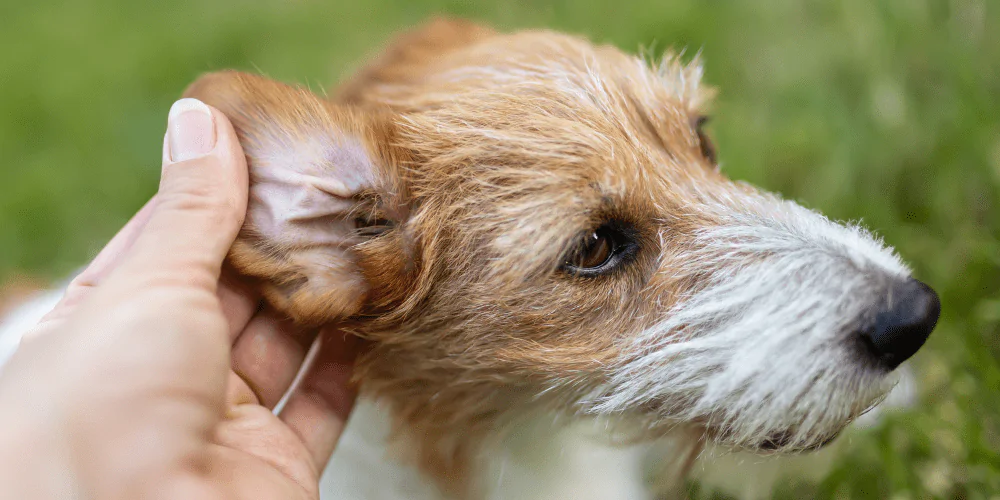
Why it’s important to learn how to handle your dog
A responsible dog parent should have confident handling skills. Following this head-to-toe check, you should also be able to tell when your pup needs to see a vet.
But why exactly is it worthwhile knowing how to handle your dog?
- You never know when your dog may get a cut, sore, lump, or bite that needs a closer look.
- Lack of handling or disrespectful handling often leads to fear or aggression. These dogs then have to be heavily sedated by vets just to have a basic health check.
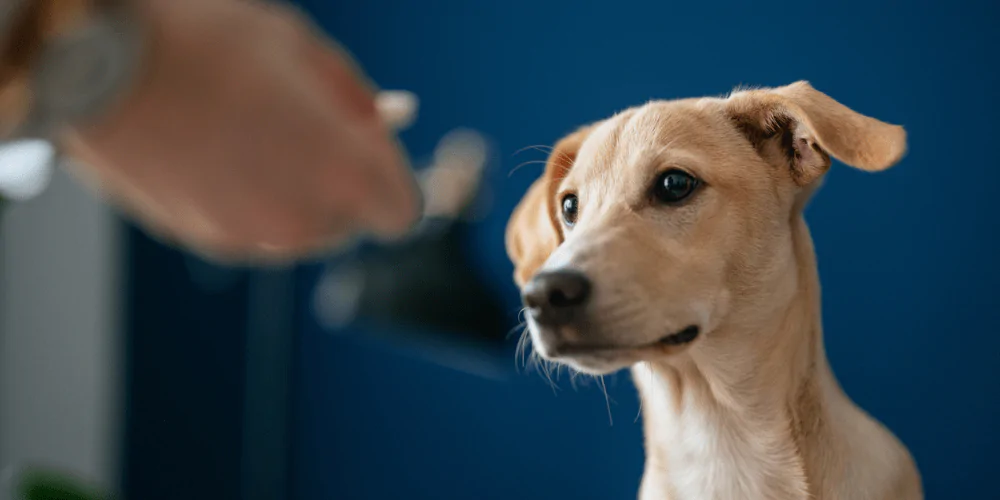
Laying groundwork for teaching your dog to be handled
Remember that with all types of handling, success brings success.
Keep sessions short with plenty of positive rewards. Don’t rush the process or try moving on to the next step too quickly.
> Step one – Read your dog’s body language
Being respectful of your dog includes understanding how to read their body language.
There are some telltale early signs that your dog isn’t comfortable with what you’re trying to do, such as:
- Physically retracting from your hands – some dogs who’ve gone through trauma may flinch or cower but most dogs will slightly and subtly pull their body awayA lowered body posture
- Flattened ears
- Licking their lips
- Lowering their head
- Whale eye (seeing the whites of their eye as they look at you with concern)
- Wrinkles at the top of the forehead
- Slightly raising their paw
As a behaviourist, I often get told a dog bites their human out of nowhere, but this is completely untrue. It tells me that the human caregiver didn’t know how to recognise their dog telling them they were unhappy. So if those early signs are ignored, your dog will escalate their behaviour to tell you they’re scared or nervous. This ‘shouting’ behaviour could be:
- Growling
- Lunging
- Snapping
- Barking
- Biting
> Step two – Practice a consent test with your dog
A consent test is your way of being completely open and transparent with your dog about what you’re going to do.
To check if they’re giving consent to be handled:
- Invite your dog to walk towards your hands or let them see you slowly bring your hands to them.
- Watch their body language. If they’re comfortable you can pet them for two to three seconds, then take your hands off.
- Depending on how your dog reacts, either carry on and repeat with another body part or stop.
First handling of any body part shouldn’t last more than a few seconds – this is plenty of time to help gauge if your dog is happy or worried:
- If your dog looks at you and wags their tail, they’re welcoming you to handle them again.
- But any of those early signs of discomfort show that you need to break handling down into smaller, more comfortable steps.
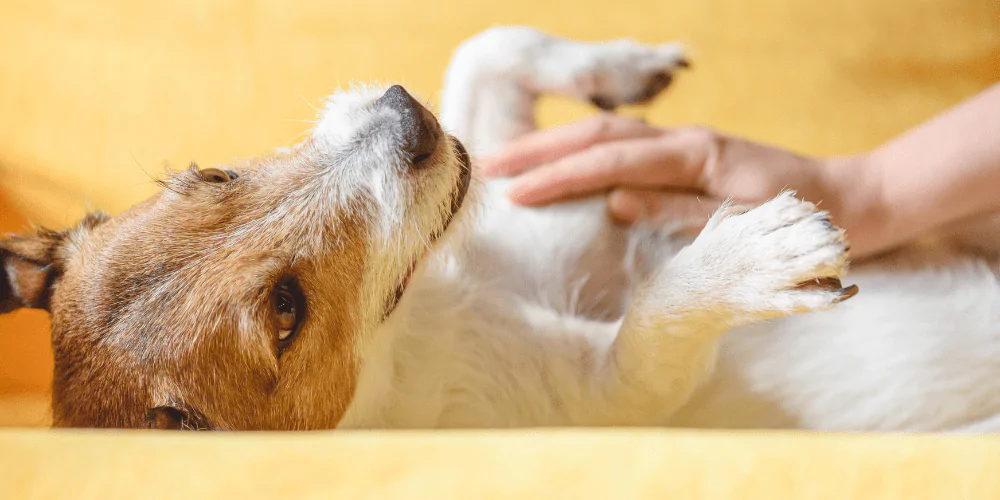
Why a dog may struggle being handled
Some dogs are completely fine with some body parts being handled but not other parts. It’s our job as pet parents to understand why, which could be:
- You haven’t handled those body parts enough as they’re not standard ‘petting zones’. The tail, back legs, inner thighs, and feet are classic places that we don’t teach our dogs to accept being handled.
- A certain body part is painful when handled. Even memory of pain in that area will make it super sensitive to touch, no matter how gentle you are. Always go to the vet if you think your dog is in pain or struggling.
- Your pooch is an adolescent with a dramatically changing body and they’re trying to catch up with this emotionally. It’s very common for a teenage dog to tell you they’re not sure about their body being handled.
- Your dog is in their twilight years and their body is getting stiffer as they age. This means they’re less likely to let you stroke around their hips.
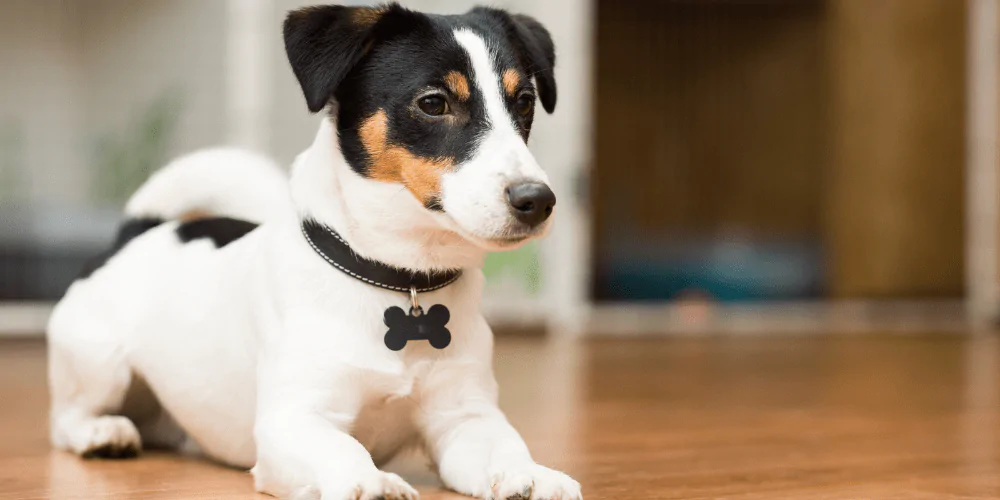
How to teach your dog consent-based handling
Consent-based handling is a game changer for your dog and builds on the consent test we mentioned earlier. You’re teaching them how to give you their permission to be handled. Allowing them to give you consent means they feel heard and are more cooperative.
There are many different ways to teach consent-based handling. The basis of consent-based training is to give your dog a way of saying:
- I’m ready to start handling
- I need to take a break
- I’m overwhelmed and need to stop
> Chirag Patel’s bucket game
One of the more popular methods is from Chirag Patel, who designed a game that works as follows:
- A small bucket of treats is placed in front of your dog and stays there throughout the game. You want your dog to be focused on the bucket.
- Begin to handle your dog and regularly reward them with treats from the bucket as long as they’re calmly looking at it. They can be in a stand, sit or down position for this. You’ll only handle them while they continue to engage with the bucket.
- If your dog looks away from the bucket, you must instantly stop handling them. It may just be a temporary distraction or your dog telling you they need a break. Either way, your dog is no longer giving consent to being handled. So you stop and wait for them to re-engage with the bucket.
- You’ll know your dog has reached all they can handle when they fully walk away from the bucket. This must be respected and handling should stop altogether.
Here are some examples of variations on the bucket game:
- Choose specific areas in the house, such as a particular room or mat, where handling or general care (like nail clipping) happens. You then teach your dog to calmly come and stand, sit, or lie down in that area. They know it is the only place they are handled and that if they slightly move away or leave completely, handling stops.
- Teach your dog different stances for handling, such as a chin rest or placing their chin on a podium. As soon as they move their head away, you also end handling.
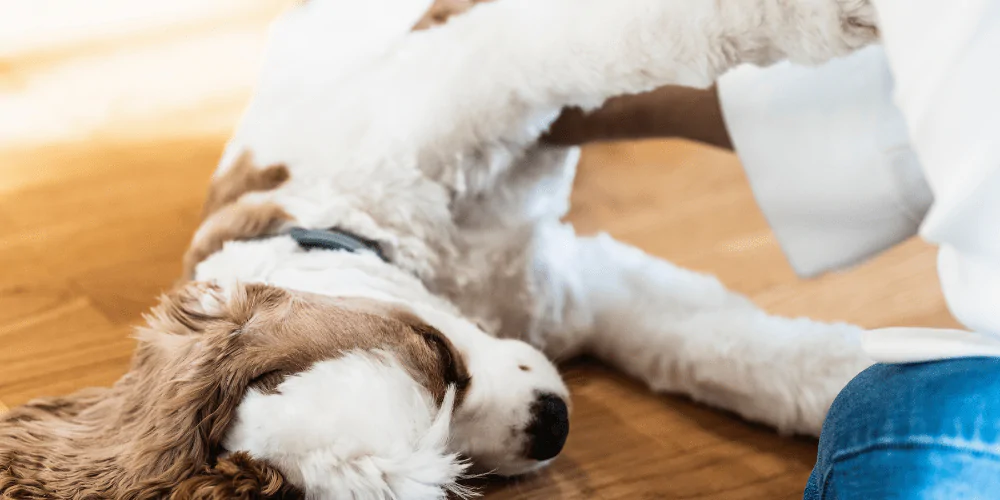
How to condition your dog to be handled
Not everyone can or will teach their dog to be happy with being handled, and that’s OK. That’s why conditioning your dog to accept being handled is important.
Petting is completely different to handling which you’re teaching this to your dog. Successful handling is being able to thoroughly feel and explore the body part for signs of problems, all without your dog getting worried.
- Help your dog learn the difference between petting and handling by choosing a recognisable and predictable spot for handling. As mentioned before, this could be a specific area of the house or a visual prompt like a mat or towel.
- Get some high-value treats in a pot and place this in your dog’s sight so they know they will be rewarded. Don’t hold treats in your hand as your dog will be focused on the treat and get frustrated as you try to handle them.
- Do consent tests on each part of your dog’s body. This will help you gauge where they are and aren’t happy to be handled.
- Always show your hand to your dog first or keep a continual hand on their body and gently slide to the next area. If removing your hand each time, move from top to bottom or front to back. Moving unpredictably to opposite areas of their body will make your dog suspicious.
- Run your hand up and down each body part. Place your fingers gently but firmly under the coat – against the way their fur naturally lies – to feel their skin. Praise them for allowing this and give them a treat from the pot.
- Check for anything usual such as lumps and bumps in the skin, damaged follicles, thorns, and scratches.
Throughout all handling, you should be regularly praising and rewarding your pup.
I tend to use cues sparingly and don’t name every single body part. Instead, I’ll use a certain phrase to name the wider area. For example, ‘let me look at your face’ for the eyes, ears, and mouth.
> What to do if your dog doesn’t want a body part touched
Your vet should be the first port of call if you’re having massive problems with handling. They need to check that your dog’s fear or discomfort isn’t because of a medical problem.
You can then approach a qualified dog behaviourist for support once any health issues have been ruled out.
So, what do you do if your dog isn’t used to handling or has painful memories of a now-healed area?
You need to break down handling into much smaller parts. Taking the ear as an example:
- Sit in front of your dog with your high-value pot of treats. You’ll be using the opposite hand of the ear you’re handling, for example, the right hand for your dog’s left ear.
- Raise your hand, give your dog a treat, and then lower your hand.
- Next, raise your hand and go slowly towards their face, give them a treat, then lower your hand.
- Now, bring your hand forward again, gently touch their cheek, give them a treat, and remove your hand.
- Next, you can place your hand at the base of the ear and let it rest there, then reward and remove.
As you can see, you’re slowly increasing contact with the body part. A treat is given with each contact to build up a positive association.
If at any point your dog is showing a lack of consent or worry, spend more time on that criteria. Or take a step back and repeat the last step until they’re comfortable. Try a few sessions a day but keep them short and sweet. You may only try doing five touches with rewards per session and then stop.
> How long does it take to desensitise a dog to being handled?
The amount of time it takes for your dog to be desensitised and accept a body part being handled depends on why they’re worried about it.
It will take longer to build up trust with a rescue dog who has a history of abuse.
Patience is key – rushing the steps will break trust, not increase it, and then it will take longer to rebuild that trust. Speak to a behaviourist if you’re struggling with progress.
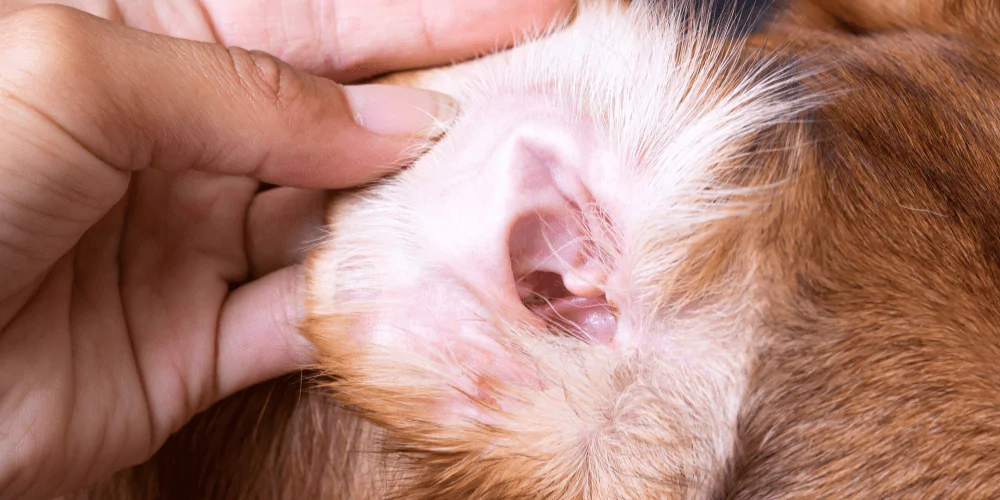
Handling different parts of your dog’s body
Now let’s look at why each body part should be handled and what to look out for when checking over your dog.
> Ears
- Run your fingers through the skin to check the base of the ear as well as the inside and outside of the ear flap.
- Look out for dirt or debris in the ears, plus any thorns or brambles caught in the forehead.
- Be respectful of whether your dog’s ears sit down or upright. Pulling them in the opposite direction to how they naturally lie can be very uncomfortable.
- The smell of yeast can tell you to get a vet-approved ear cleaner before an infection starts.
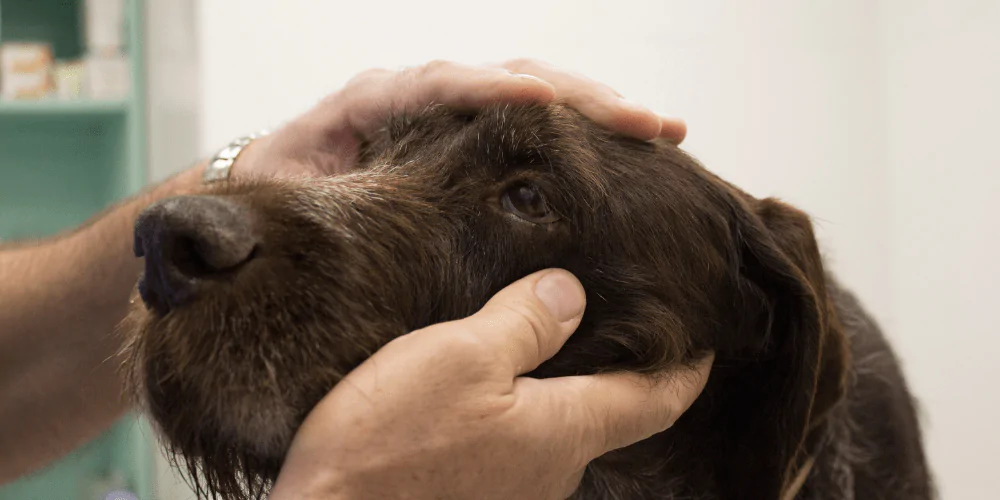
> Eyes
- Dogs can feel threatened by another dog or person staring into their face. So even if you have a great relationship, you’ll need to be respectful of their potential discomfort.
- Handling of your dog’s eyes should be done carefully. Start by placing a thumb or forefinger on the lower eyelid. Slowly and gently bring the eyelid down, praise, and treat. Do the same with the upper eyelid.
- If the vet needs you to completely open the eye, place one finger on the lower eyelid and one on the upper lid. Slowly open them both at the same time while calmly and quietly praising.
- Look for debris, redness, irritation, discharge, and anything that might cause your dog to be excessively blinking.
- Eye problems can worsen quickly so get to your vet if you’re at all worried.
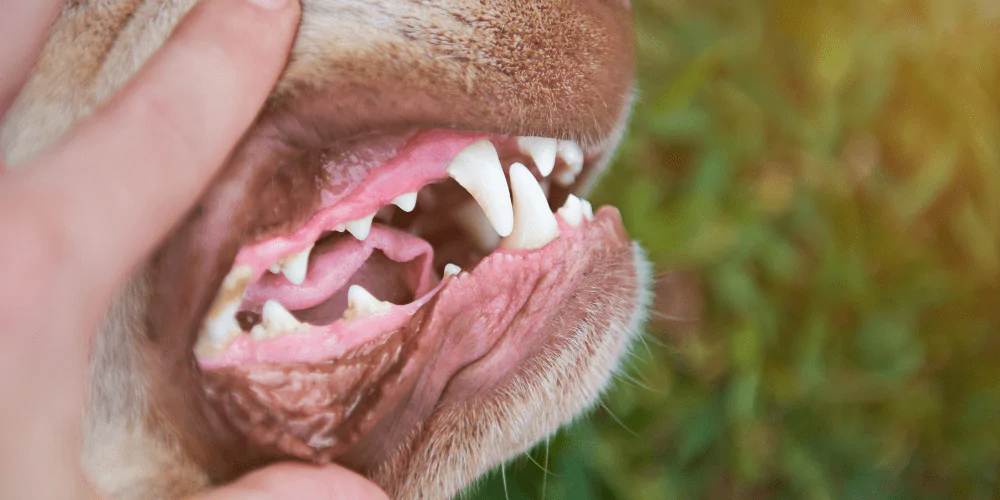
> Mouth and muzzle
- It’s very important that you can handle your dog’s mouth, including their teeth and gums.
- Start by wetting your fingers – dry fingers in a sticky mouth can be uncomfortable for your dog. Use the consent test to try placing one wetted finger at a time under the gum line. Hold it there for a second, remove it, and then give your dog a treat.
- Build up to gently lifting the top lip flap and exposing the front canine teeth. Use a finger to carefully massage the teeth and gums.
- Next, try gently touching the tongue, removing your finger, and then reward this with a treat.
- Slowly over time, you can encourage your dog to open their mouth and use a finger to gently separate the jaw for a few seconds.
- Run your hands around the top and underneath of your dog’s muzzle. Check their nostrils for thorns, dryness, cracking, and discharge.
> Throat and shoulders
- Run your fingers against the coat to feel down the neck and around the shoulders.
- Check for lumps, bumps, and thorns.
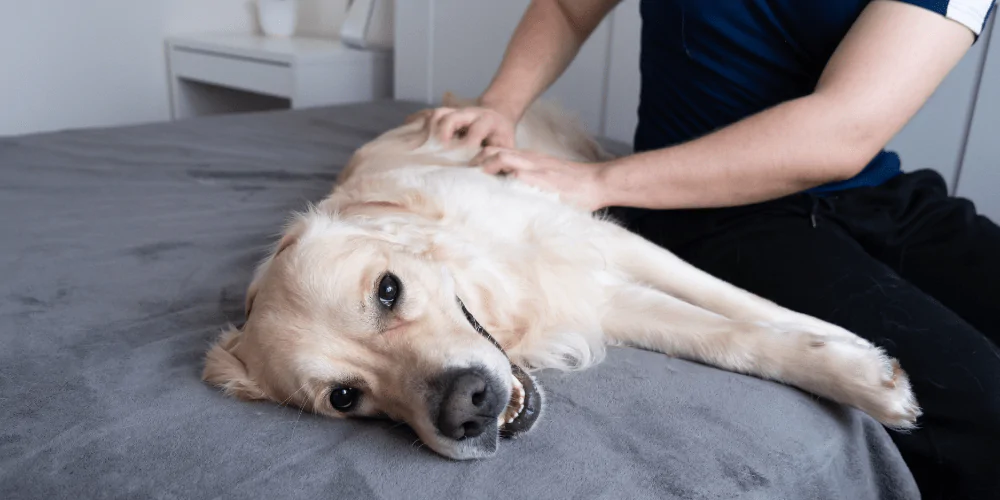
> Back and belly
- Most dogs will accept their back being handled as it’s a common petting zone. It’s important to help your dog understand and get used to the difference between being petted and handled in this area.
- Similar to the back, dogs who love a belly rub will be more comfortable with their stomach being handled. Look for nettles and seeds which often get caught up in belly fur.
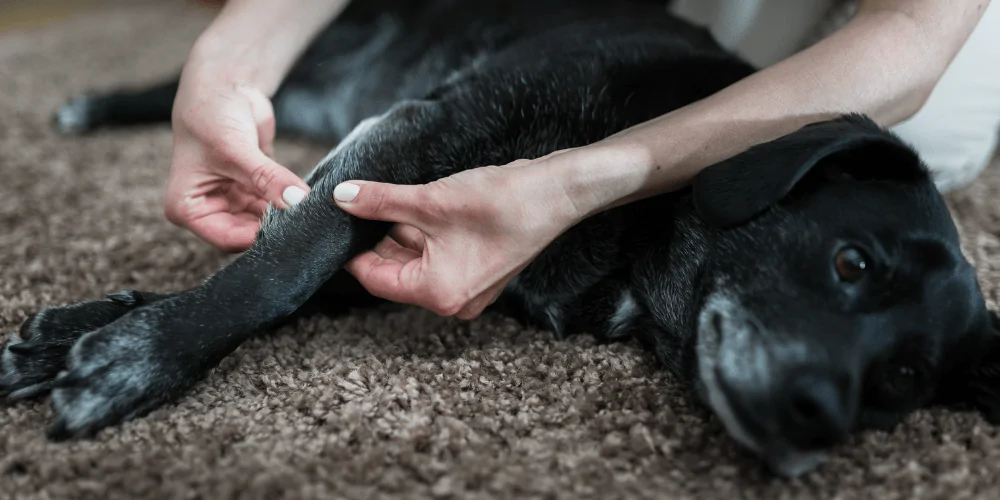
> Legs
- Only ever check your dog’s front and back legs in the direction of their normal motor movement. Don’t pull a leg out to the side as this is uncomfortable and will end consent.
- A major vein (cephalic vein) – where blood is drawn by the vet as needed – runs through the leg. Pinching or rubbing this area too hard is also uncomfortable.
- One of the most missed places for handling and grooming is the armpits. Having your dog lie down may be easier for this as you can quietly lift their paw and run your hand under the armpit.
- Check any skin folds and creases for yeast, thorns, ticks, and cuts.
- Run your hands down the knee and hock joints and inner thighs (an area often missed).
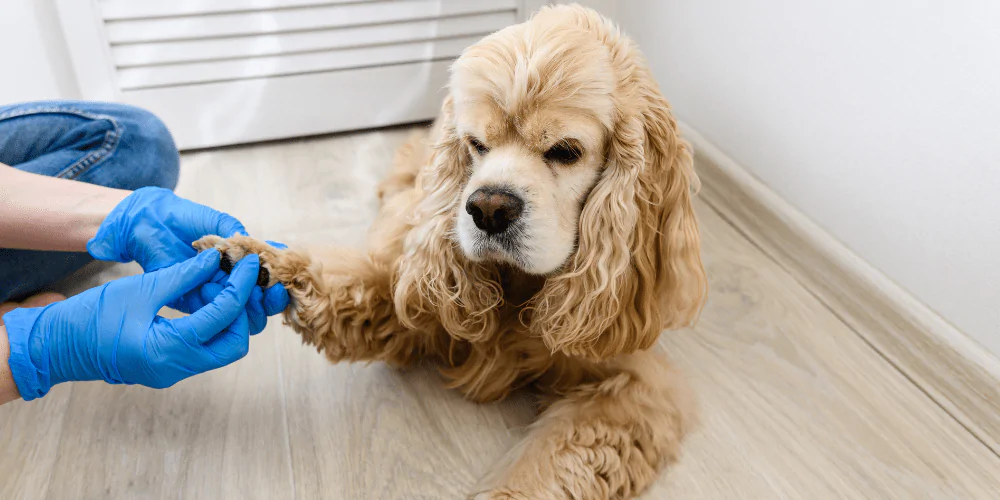
> Feet
- Interdigital cysts, torn toenails, and cut pads are very common injuries for dogs, so make sure to feel individually down each toe and claw.
- Check for small lumps around the toe pads and the webbing in between the pads. Look out for matting if your dog has hairy feet as these can rub.
- Check for ice balls in between toe pads during the winter months.
- The back feet are often really ticklish so be respectful of this.
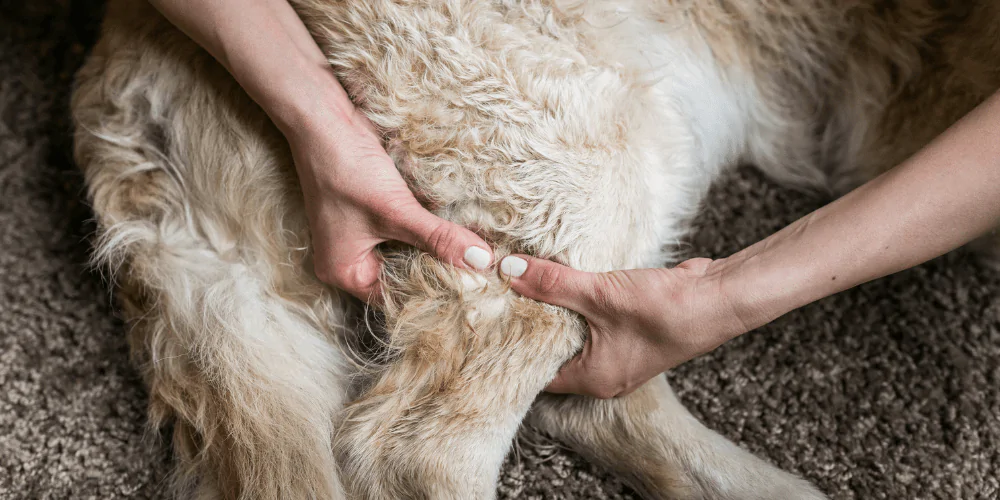
> Genitals and back end
- It’s essential to be able to check your dog’s genitals. Females can get infections or ticks can gather around the folds of the vulva.
- Look out for infection, discharge, ticks and rashes. Check for lumps and bumps in the mammary glands as both males and females can get breast cancer.
- Run your hands down and over your dog’s rump to just before the tail.
- Get your dog used to being handled around their bottom, as this is where your vet will take their temperature and drain the anal glands. It will also help your dog feel more comfortable if you need to remove grass or dried poo.
> Tail
- Tails are often overlooked as we think we can easily see them and spot any problems.
- Like the ears, be respectful of how your dog’s tail sits when doing your checks. Don’t harshly pull it up or drag it down against its natural position as this is very uncomfortable for your pup.
Protect your dog from the unexpected with flexible dog insurance from Petsure.


